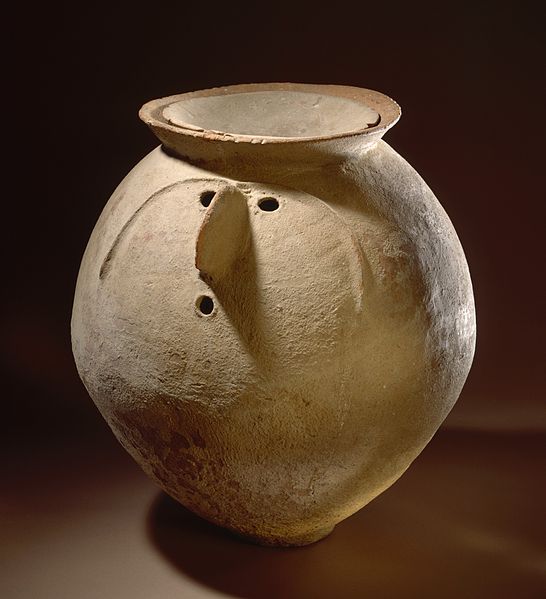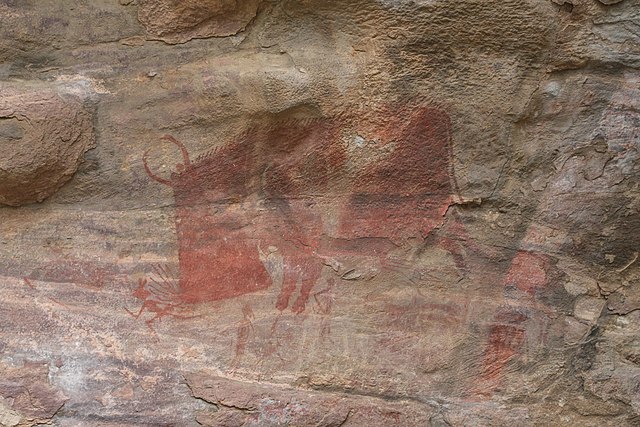The Vedic period, or the Vedic age, is the period in the late Bronze Age and early Iron Age of the history of India when the Vedic literature, including the Vedas, was composed in the northern Indian subcontinent, between the end of the urban Indus Valley Civilisation and a second urbanisation, which began in the central Indo-Gangetic Plain c. 600 BCE. The Vedas are liturgical texts which formed the basis of the influential Brahmanical ideology, which developed in the Kuru Kingdom, a tribal union of several Indo-Aryan tribes. The Vedas contain details of life during this period that have been interpreted to be historical and constitute the primary sources for understanding the period. These documents, alongside the corresponding archaeological record, allow for the evolution of the Indo-Aryan and Vedic culture to be traced and inferred.
Image: MET 2001 433 53 O
Image: Ax Blade (Celt)
Cremation urn of the Gandhara grave culture (c. 1200 BCE), associated with Vedic material culture
Pottery of the Painted Grey Ware culture (c. 1000–600 BCE), associated with Vedic material culture
Anatomically modern humans first arrived on the Indian subcontinent between 73,000 and 55,000 years ago. The earliest known human remains in South Asia date to 30,000 years ago. Sedentariness began in South Asia around 7000 BCE; by 4500 BCE, settled life had spread, and gradually evolved into the Indus Valley Civilisation, which flourished between 2500 BCE and 1900 BCE in present-day Pakistan and north-western India. Early in the second millennium BCE, persistent drought caused the population of the Indus Valley to scatter from large urban centres to villages. Indo-Aryan tribes moved into the Punjab from Central Asia in several waves of migration. The Vedic Period of the Vedic people in northern India was marked by the composition of their large collections of hymns (Vedas). The social structure was loosely stratified via the varna system, which has been incorporated into the highly evolved present-day Jāti-system. The pastoral and nomadic Indo-Aryans spread from the Punjab into the Gangetic plain. Around 600 BCE, a new, interregional culture arose; then, small chieftaincies (janapadas) were consolidated into larger states (mahajanapadas). A second urbanisation took place, which came with the rise of new ascetic movements and religious concepts, including the rise of Jainism and Buddhism. The latter was synthesised with the preexisting religious cultures of the subcontinent, giving rise to Hinduism.

Timeline of Indian history
Mesolithic rock art at the Bhimbetka rock shelters, Madhya Pradesh, showing a wild animal, perhaps a mythical one, attacking human hunters. Although the rock art has not been directly dated, it has been argued on circumstantial grounds that many paintings were completed by 8000 BCE, and some slightly earlier.
A dolmen erected by Neolithic people in Marayur, Kerala, India.
Stone Age (6,000 BCE) carvings of Edakkal Caves in Kerala, India.








